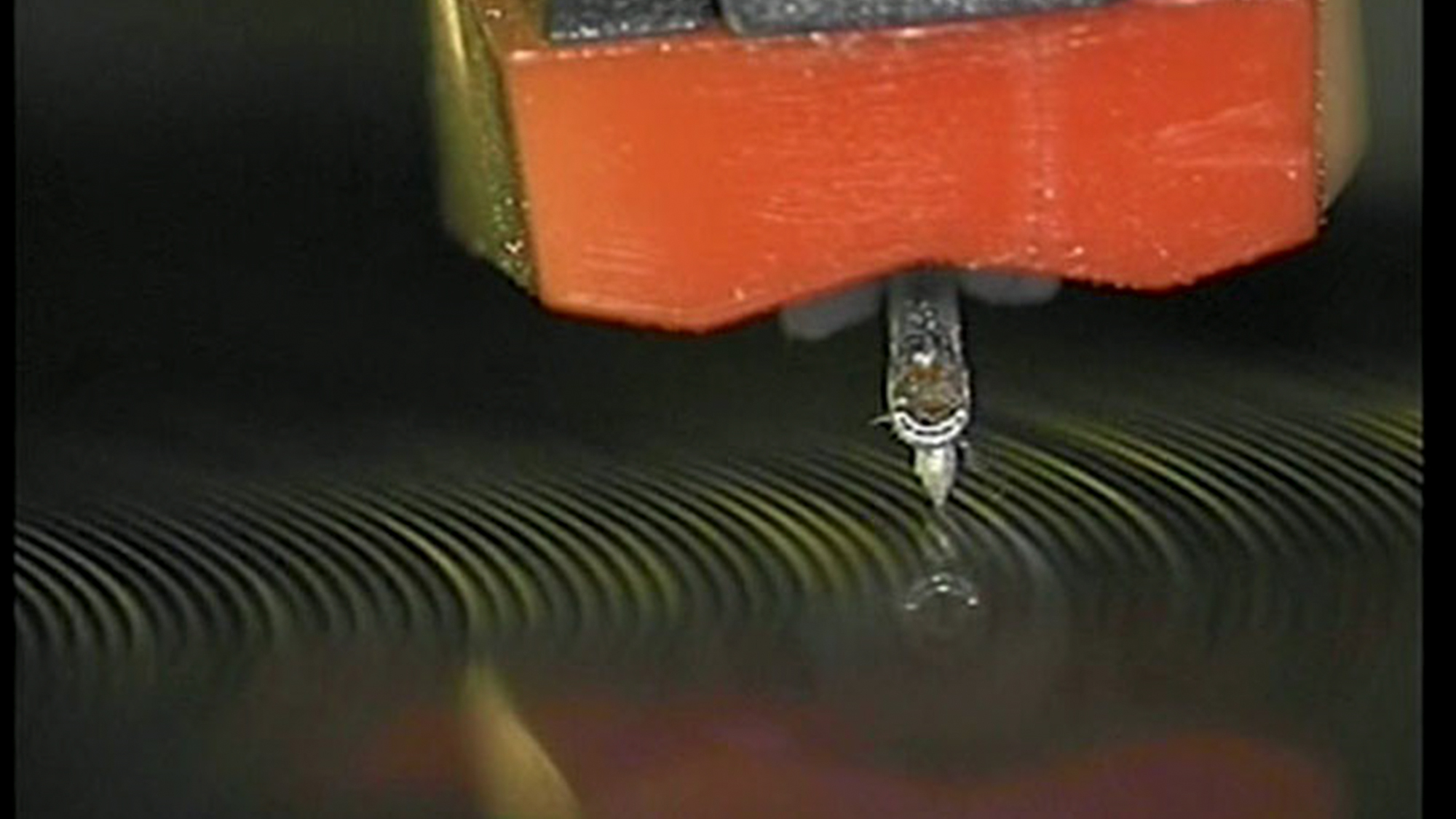-3x1.jpg)
Musical landscapes, archaic and synthetic (Cyrill Schläpfer, Geneviève Calame and Jacques Guyonnet)
La Centrale, from Wednesday September 17 to Sunday September 21, 2025 / 1:00-6:00 PM
For three months, a program of films and videos offers a journey through half a century of moving images, exploring some of the possible articulations between sound, music and image. Through a series of thematic "bouquets" or ones centered on a particular filmmaker or video artist, the program presents the work of emblematic or little-known artists, video art pioneers or film thurifers.
In a dialogue between projected works (room 1) and works on cathode-ray monitors (room 2), between formal, ethnographic and political approaches to sound, the program highlights the uses and practices of the musician's portrait, performance and soundscapes.
Each week, the films and videos disseminate discreet touches, apparitions and motifs, connections between bouquets and nods to the Biennial program: Paganini, a Sony Walkman, Jean-Luc Godard revisited by John Zorn, salt deserts, the Bachmann / Ceresole couple, brass bands and more.
A proposal by Maxime Guitton.
Room 1
Cyrill Schläpfer, Ur-Musig
1993, 108', 35 mm digitized film, color, 5:1 sound
Courtesy of the artist
A musicologist before becoming a filmmaker, Cyril Schläpfer set out on the roads of early Switzerland (particularly Appenzell) to discover the archaic "musical landscapes" that still exist. Ur-Musig ("primitive music") reveals the intimate bond between the locals and their music. Presented at the Locarno Film Festival in 1993, this documentary played a decisive role in the rediscovery of Switzerland's hitherto neglected traditional music heritage.
Cyrill Schläpfer
Born 1959 (CH)
Based in Lucerne
Producer, composer and percussionist Cyrill Schläpfer maps Switzerland's diverse soundscapes. He studied music at Berklee College of Music, where he specialized in recording techniques, music production and percussion. He then worked at EMI, in the popular music department. He discovered the recordings of Schwyzerörgeli player Rees Gwerder, who gave him lessons and encouraged him to go out into the field in search of traditional alpine music. Cyrill Schläpfer has been managing the CSR Records label since 1989.
room 2
Geneviève Calame, Fluid labyrinths
1976, 9'25'', video, color, sound
Collection du Fonds d'art contemporain de la Ville de Genève (FMAC)
This video "features" the EMS Spectre, or Spectron video synthesizer, a hybrid (analog and digital) device created by Richard Monkhouse in London, enabling the image to be modulated in real time according to a sound source. Studios A.R.T. managed to acquire one of the fifteen or so produced in 1973. As the title suggests, the work is based on a dialectic of opposites. In the forty or so sequences that make it up, image and sound evolve at their own rhythms. Labyrinthes fluides perfectly illustrates the equal importance and autonomy that Geneviève Calame has accorded to sound and image in her research.
Geneviève Calame
(1946-1993)
Lived in Geneva
Geneviève Calame's work, which ranges from orchestral pieces to videos, electronic music and photography, testifies to the finesse with which she has explored sound and image. After studying piano with Pierre Boulez, Henri Pousseur and Jean-Claude Eloy, she turned her attention to the potential of electronic instruments, and trained in the USA - notably with William Etra - in Paris and Stockholm. In Geneva, she joined the Studio de musique contemporaine, founded in 1957 by Jacques Guyonnet, whom she married. The couple founded Studios A.R.T. (Artistic Research Team) in 1971, where Geneviève Calame became head of the video-synthesis department.
Jacques Guyonnet, Lucifer photophore or video variations for a sphere and feedback
1975, 7'06'', video, color, sound
Collection du Fonds d'art contemporain de la Ville de Genève (FMAC)
Lucifer photophore exploits the possibilities offered by the EMS Spectre synthesizer. The image is composed and modulated according to an electronic melody line composed by Jacques Guyonnet and Henri Pousseur, with the video signal reacting to the sound signal. A sphere and colors evolve, punctually crossing a human face and a monitor screen. The credits blend with the shapes and surfaces and the music, forming part of the visual spectacle. Lucifer, before becoming the fallen angel, was Latin for "bearer of light", as the Greek term "photophore" also indicates.
Jacques Guyonnet
(1933-2018)
Lived in Geneva
Composer and conductor Jacques Guyonnet founded the Studio de musique contemporaine in Geneva in 1957, and began collaborating with Pierre Boulez in 1960, before setting up the Studios A.R.T. with his wife Geneviève Calame eleven years later. These studios enabled the couple to develop their musical and visual research, and fulfill commissions in the fields of advertising, television and film. Under the name Jacques Olivier, Jacques Guyonnet signed soundtracks for films by Michel Soutter and Alain Tanner. At the end of the 1990s, he became a publisher and writer, writing novels and essays, and publishing an unreasoned catalog of his works.






